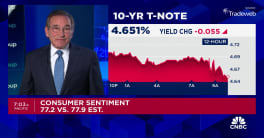Around the world, industrialized nations are struggling to deal with the common challenge of rising inflation rates - but some more than others.
Canada, the United States, Australia and numerous European countries are seeing annual CPI inflation rate increases of between 3% and more than 4%.
In other countries, though, the increases can be a little more extreme.
Zimbabwe is the latest example of what happens when inflation spirals out of control to the point of hyperinflation. With the highest rate of inflation in the world - about 2.2 million per cent - Zimbabwe last week issued a Z$100 billion note, though still not enough to buy a loaf of bread, which is roughly double the price.
In an effort to deal with the hyperinflation, Zimbabwe's central bank governor Gideon Gono announced Thursday that the bank will lop 10 zeros off the value of its currency - turning Z$10 billion into Z$1. The change in the currency's valuation will come into effect Aug. 1.
Gono was reported as saying the prices are being driven by the scarcity of products, an issue he blamed on the government.
This isn't the first time Zimbabwe has had to remove zeros from the end of its currency to deal with runaway inflation. In 2006, the Zimbabwean dollar was redenominated at a rate of Z$1 equal to Z$1,000.
Germany went through a similar process in the early 1920s, when nine zeros were struck from the value of the currency. Reports peg Germany's inflation rate at that time at 854 trillion per cent.
By Stephen Huebl and edited by Sarah Sussman







